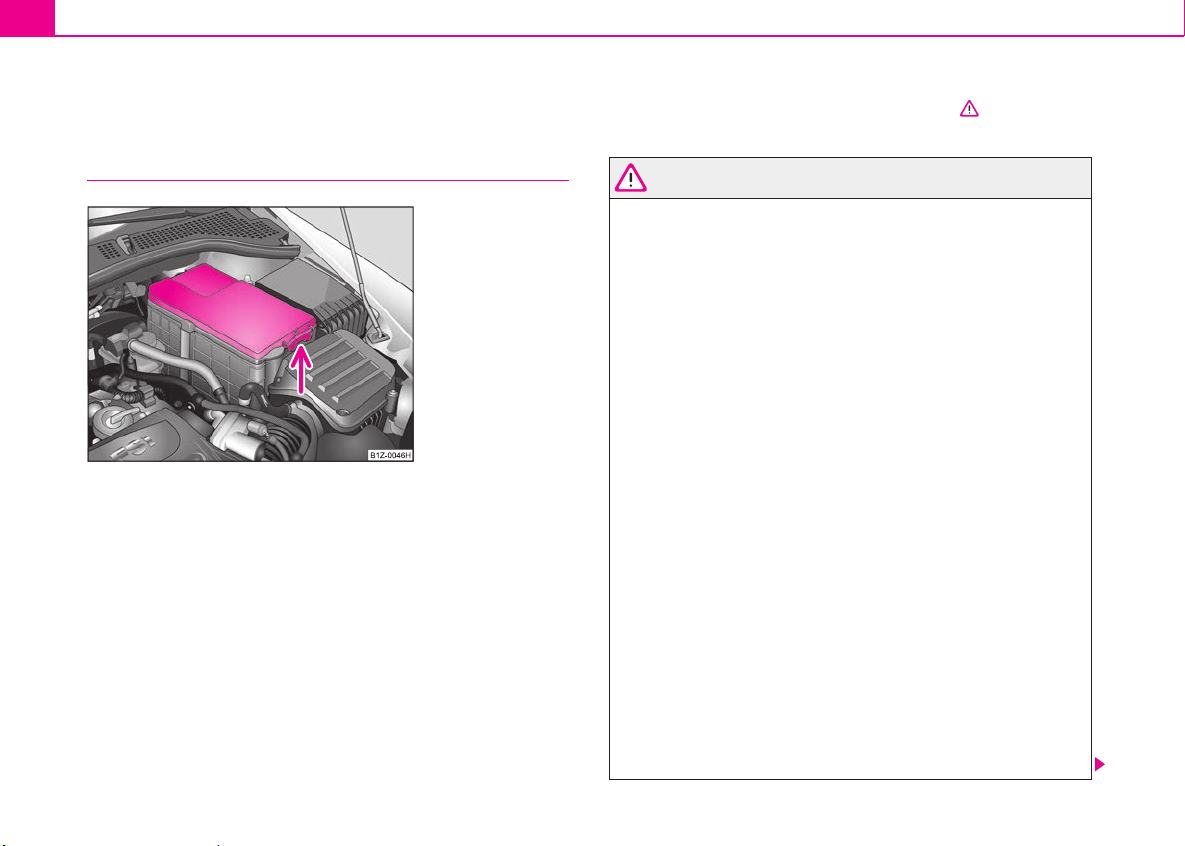Loading ...
Loading ...
Loading ...

Inspecting and Replenishing258
The battery
Working on the battery
The battery is located in the engine compartment below a plastic
cover*.
– Press the interlock on the side of the battery cover ⇒ fig. 196,
fold the battery cover out and pull it out.
– The installtion of the battery cover takes place in the reverse
order.
Removal and installation of the battery is not recommended since it can,
under certain circumstances, lead to major damage. Contact a specialist
garage.
There is a risk of injuries, scalding, accidents and burns when carrying out
any work on the battery and on the electrical system. It is essential to
comply with the warning instructions stated below ⇒ and with the
general applicable rules of safety.
WARNING
• The battery acid is strongly corrosive and must, therefore, be
handled with the greatest of care. Always wear protective gloves,
eye and skin protection when handling batteries. Corrosive fumes
in the air irritate the air passages and lead to conjunctivitis and
inflammation of the air passages in the lungs. Battery acid
corrodes dental enamel and creates deep wounds after contact
with the skin which take a long time to heal. Repeated contact with
diluted acids causes skin diseases (inflammations, ulcers, slin
cracks). Acids coming into contact with water are diluted accompa-
nied by significant development of heat.
• Do not tilt the battery otherwise battery electrolyte may flow out
of the battery vent openings. Protect the eyes with safety glasses
or a shield! There is the danger of suffering blindness! If any
battery electrolyte gets into your eye, rinse out your eye immedi-
ately with clear water for several minutes. Contact a doctor without
delay.
• Splashes of acid on your skin or clothes should be neutralised
as soon as possible using soap suds and then rinsed with plenty
of water. Contact a doctor immediately if you swallow battery elec-
trolyte.
• Keep batteries out of the reach of children.
• Hydrogen is released when you charge a battery and a highly
explosive gas mixture is produced. An explosion can be caused
through sparkling over during unclamping or loosening of the
cable plug while the ignition is on.
• Bridging of the poles will create a short circuit (e.g. through
metal objects, cables). Possible consequences of a short circuit:
Melting of lead struts, explosion and burning of the battery, jets of
acid spurting out.
Fig. 196 Engine
compartment: The
battery
s24s
.
book
Page
258
Thursday
,
November
24
,
2005
12:27
PM
Loading ...
Loading ...
Loading ...